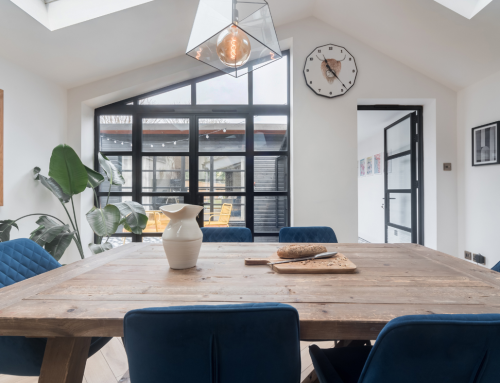To be able to build an extension on your house without the need for planning permission, you will have to do so via permitted development. You can still apply for permission for permitted developments works under a lawful development certificate, but you do not have to.
Porch extensions are possible under permitted development. You will have to make sure that the footprint of the porch is no greater than 3sqm and the maximum height of any part of the porch is no greater than 3m from the ground level. No part of the porch can be within 2m of any boundary that fronts a highway. In most of the documents online there is no mention of the original front door, but it is worth noting that if you create an enclosed porch with a new front door, you have to keep the old front door in its original location (albeit it would now become an internal door).
Outbuildings can be built under permitted development. Outbuildings on designated land cannot be built to the side of the property and are not permitted in any location on listed properties. They cannot be constructed on any land forward of the principal elevation of the house. The footprint of any outbuildings should not exceed more than 50% of the land around the original dwelling; if you construct multiple outbuildings (including sheds), the total of all of these would be considered. They should not be used as standalone dwellings or have permanent living accommodation in them. Outbuildings must be single storey and have an eaves height no greater than 2.5m; they can also have a maximum roof height of 4m on a dual pitch roof or 3m on any other roof type. These heights are reduced if any part of the building is within 2m of a boundary; if this is the case, the overall height of the building can be no greater than 2.5m.
Loft conversions are possible under permitted development. You can drastically change the shape of the roof and add Velux windows and dormer windows, but you cannot add dormers to the front face of the roof. Any materials used for the external faces of the works needs to be similar appearance to the original house. The part of the proposals can be higher than the existing ridge of the property. On terraced houses, no more than 40 cubic metres can be added to the roof and 50 cubic metres for semi and detached houses. If an existing extension is in place and its roof joins the main roof of the house, this volume will need to be deducted from the amount you are able to add, which can drastically reduce how much you can extend. Balconies and raised platforms cannot be created under permitted development. Any windows used should be similar in appearance and size to the original house, and any side facing windows will need to be obscure glazed and non-opening below 1700mm. The dormer should be set back by 200mm from the eaves of the house.
Single storey extensions can transform a house and, again, can be constructed without planning permission. Extensions cannot be built forward of the front elevation or side elevation if it is fronting a highway. The external materials must be similar in appearance to those on the original house. Side extensions can be perfect for a study, utility room or ground floor shower room, but they cannot be wider than half the width of the original house; they must be single story and cannot have a height greater than 4m from ground level. If an extension is within 2m of a boundary, it must have an eaves height no greater then 3m. Rear extensions cannot be more than 3m in depth on terraced and semi-detached houses and 4m in depth on detached houses. The maximum height can be no more than 4m and the eaves and ridge should be no higher than the existing house.
Double storey extensions are possible but more difficult. They can only be located to the rear of the house and have an eaves or ridge height no greater than the existing house. The extension must be at least 2m away from any boundaries. It is possible to extend out 3m from the rear wall of the house if you have at least 7m from the extension to the rear boundary. The pitch of the roof should be as close to the original roof as practically possible. Any materials used will also need to be similar in appearance to the rest of the property, and side facing windows will need to have obscured glazing and be non-opening below 1700mm from finished floor level. As with loft conversions, no balconies or raised platforms can be created.






